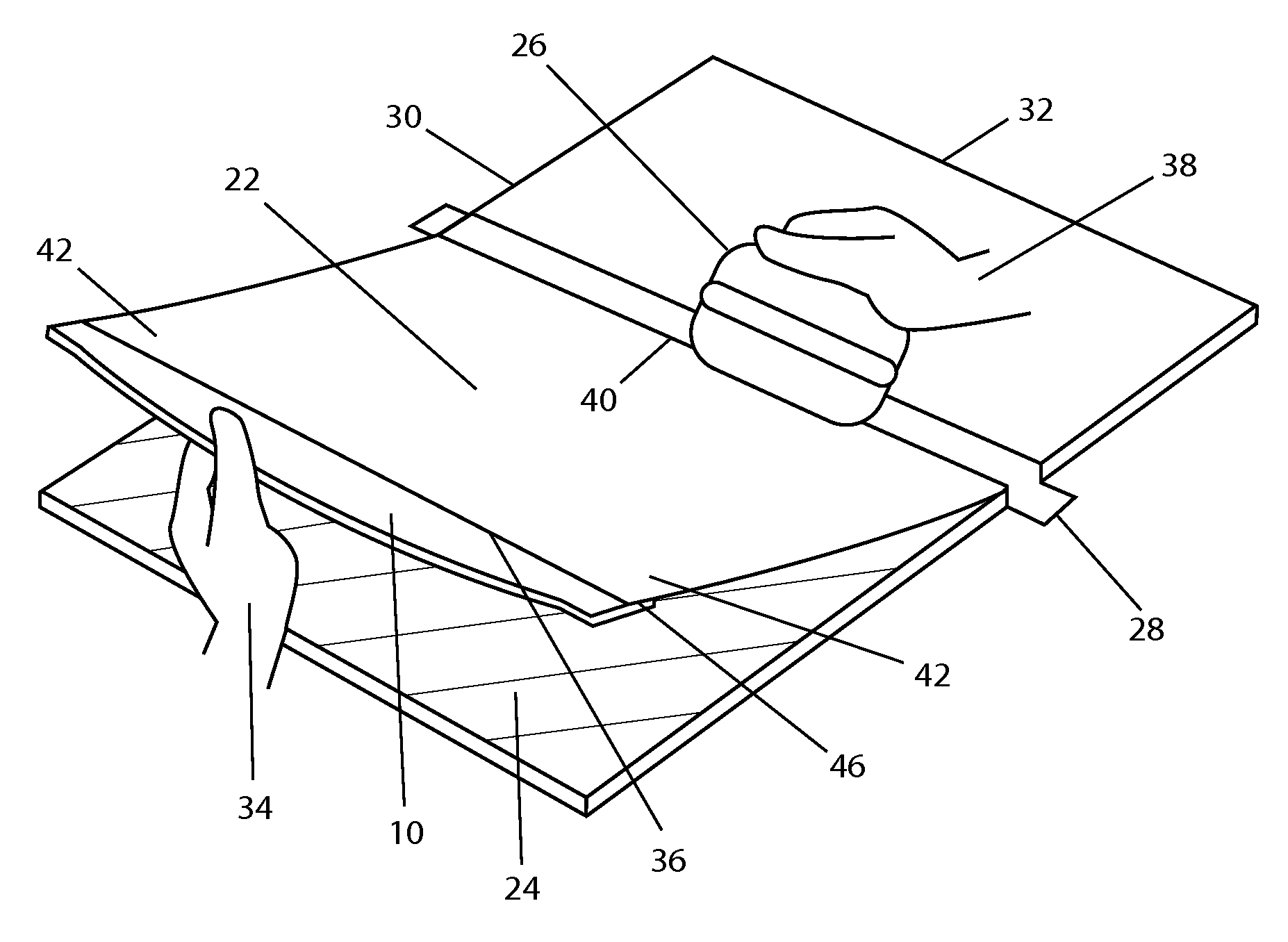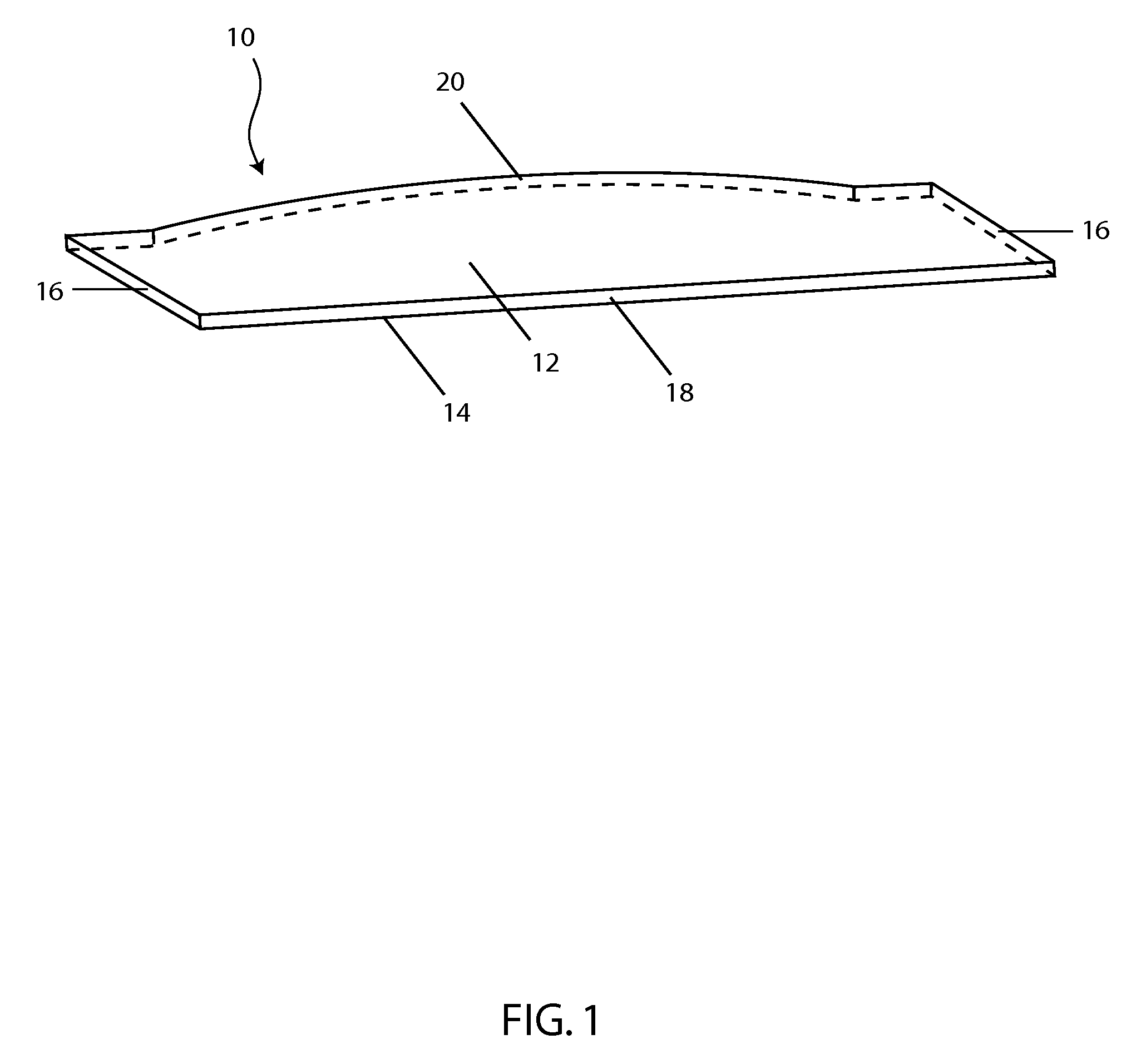Handheld Accessory Tool and Method for the Application of Adhesive Films
a technology of adhesive films and accessories, applied in paper/cardboard containers, transportation and packaging, paper hanging, etc., can solve the problems of affecting the gripping effect of the hand, and forming bubbles and wrinkles. , to achieve the effect of optimal gripping surfa
- Summary
- Abstract
- Description
- Claims
- Application Information
AI Technical Summary
Benefits of technology
Problems solved by technology
Method used
Image
Examples
Embodiment Construction
[0060]One embodiment of the tool is illustrated in FIG. 1 (looking from the lower edge 18) and FIG. 2 (looking from the upper edge 20). The tool 10 is generally elongate and thin in shape. The tool 10 has a top surface 12, a bottom surface 14, two side edges 16, a straight lower edge 18, and a curved upper edge 20. The purpose of the curved upper edge 20 is to provide a comfortable conformation for manual handling, as well as to provide ornamentation. The tool 10 may be constructed of a variety of lightweight semi-rigid to rigid materials including plastic (such as nylon), metal (such as aluminum), PVC, wood, rubber, or a combination of materials. Presently, we contemplate that the tool 10 is made of closed-cell PVC (such as Sintra®) with a ⅛″ thickness, as this material is inexpensive, and can be easily die-cut into a simple shape by a computer numerical control (CNC) machine. The tool 10 can be manufactured in various lengths, such as the typical lengths of print media encountered...
PUM
| Property | Measurement | Unit |
|---|---|---|
| Length | aaaaa | aaaaa |
| Shape | aaaaa | aaaaa |
| Adhesivity | aaaaa | aaaaa |
Abstract
Description
Claims
Application Information
 Login to View More
Login to View More - R&D
- Intellectual Property
- Life Sciences
- Materials
- Tech Scout
- Unparalleled Data Quality
- Higher Quality Content
- 60% Fewer Hallucinations
Browse by: Latest US Patents, China's latest patents, Technical Efficacy Thesaurus, Application Domain, Technology Topic, Popular Technical Reports.
© 2025 PatSnap. All rights reserved.Legal|Privacy policy|Modern Slavery Act Transparency Statement|Sitemap|About US| Contact US: help@patsnap.com



